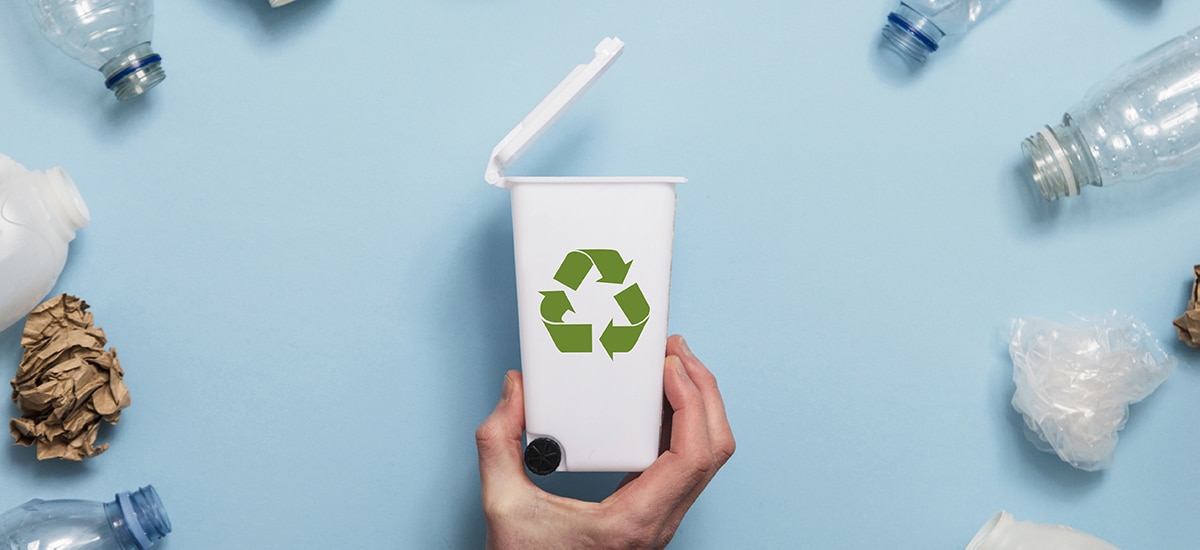
Recyclable and Biodegradable Packaging
Recyclable and biodegradable packaging, these are two very prominent topics being brought up in conversations all over Australia. We are becoming more conscious of our environmental footprint and want to reduce our carbon footprints with single-use packaging.
But what is the difference, and which are sustainability-conscious customers looking for?
… limit to the amount of times they can be recycled, and eventually have to be thrown away.
Recyclable products can be reused to create the same product again, or another, similar type of product. For instance, some metals can be melted down, and reformed into new shapes. By the same token, some types of plastic can be recycled into another bag or container.
This means our effect on the environment is drastically lessened, as we continually reuse the same amount of resources, and don’t let non-biodegradable materials sit in landfills or get thrown away to damage fragile ecosystems.
The catch with this is, most items – particularly plastics – have a limit to the amount of times they can be recycled, and eventually have to be thrown away. Furthermore, products must be in good condition to be recycled, especially those used around food. For instance, a cardboard pizza box should, in theory, be easily recyclable. However, if that box has grease stains from melted cheese and sauce, it becomes too difficult to recycle.
That reduces the practicality of this method for many products quite significantly. Therefore, while recycling still reduces how quickly we produce waste, it doesn’t solve the underlying problem caused by landfills and non-disposable waste.
Biodegradable products, however, are the latest innovation in packaging solutions, and considered the ultimate solution by some. This is when an item is made of materials that will naturally breakdown and return to soil over a period of time, decomposing into its base elements of water, carbon dioxide and biomass. Typical, old-school plastic – that most useful and versatile of materials – is one of the hardest items to break down, only biodegrading after around 1000 years.
However, modern plastic options, made out of natural ingredients such as tapioca, hemp and cornstarch are able to break down quickly and sustainably. Biodegradable products also have great potential to reduce our environmental footprint, as if all materials used are converted back into basic natural ingredients, the impact of the large amounts of waste we produce is removed.
However, the downside is that many of the materials touted as biodegradable are more so in an academic rather than practical sense. Many of them take long periods to decompose, or will only do so under precise circumstances, such as being put in an industrial strength composter, that maintains a high level of heat constantly.
…very few items will biodegrade in a landfill …
This means, that an item being thrown away under regular circumstances may not biodegrade, regardless of its theoretical ability to do so. Actually, very few items will biodegrade in a landfill, due to the lack of oxygen available.
“The obvious benefit of biodegradable plastic,” explains The New York Times in ‘The Myth of Biodegradability’, “is that it has the perceived ability to decompose when it becomes waste. As with many green practices, however, the devil is in the details.”
The final, and overall best solution, would be compostable materials, which are defined as materials able to break down within just 90 days. However, few products capable of achieving this are widely available.
… this isn’t a complete solution.
So, all the customers looking to decrease their environmental impact, are they after biodegradable or recyclable packaging?
Lots of people see recycling products as the best option – because it’s familiar and easy to understand. Less people realise that there is a limit to a product’s potential for recycling, that this isn’t a complete solution.
It’s important to look at the whole process when deciding this. What facilities do you have access to? If you have a home compost or organic bin, then perhaps the best option for you would be biodegradable packaging. If you instead have access to local recycling facilities, than perhaps this should be the option you use.
The truth is, both options have both their pros and cons when it comes to reducing waste. For our waste management system to be more effective, consumers need to be informed of the differences between the two options, and choose the one which is right for them.
However, attempting to use either of these more environmentally friendly options is a huge step in the right direction. At the moment, we have neither the facilities nor the technology to completely reduce the amount of waste we create, but consumers who deliberately choose a more sustainable option, are helping reach our no-waste target for 2025.
Equipping the food industry to grow with food processing and packaging solutions
call 1300 88 99 51
email [email protected]
room 35 Shirley Way, Epping VIC 3076
room 9 Mcilwraith St, Wetherill Park NSW 2164
room 21 Hoyle Rd, Hope Valley WA 6165
room 27 Beal Street, Meadowbrook QLD 4131
room 7 Chadderton Bvd, Epping VIC 3076
room 40 Logistics Boulevard, Kenwick WA 6107
room 25 Hayton Road, Wigram, Christchurch 8042, NZ
Connect with us on LinkedIn
